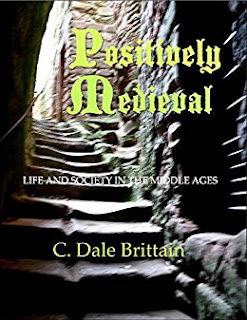Although Cluny and Cîteaux, as I have discussed earlier, are now the best known French monasteries of the eleventh and twelfth centuries, there were plenty of other houses, not associated with either of these great monasteries, where the monks tried to follow a pure life, and where laypeople came seeking prayers for their relatives and themselves.
One of the most significant of these was Fontevraud, founded in the early twelfth century in the west of France, on the border between Anjou and Poitou. It was patronized by great kings, including Henry II of England and his wife, Eleanor of Aquitaine, who had already been queen of France before marrying Henry.
The above is Eleanor's tomb at Fontevraud. (It was added well after her death.)
But Fontevraud had a distinctly non-royal origin. It was founded by a man named Robert of Arbrissel (c. 1045-1116), so-called because he came from the village of Arbrissel, in Brittany. He joined the church as a young man and became a priest.
He was very interested, as were many other well-educated men in the eleventh century, in trying to find a life that matched that of the early apostles. In his early 50s he retreated to the forest of Craon, near his home village, to become a hermit. There were actually quite a few hermits there already, men living alone, devoting their days to prayer and contemplation, living from offerings of people who came to seek their wisdom and from small vegetable gardens.
It would be difficult being a hermit. On the one hand one didn't want to starve, and thus pilgrims bringing small offerings were good. On the other hand, how can a hermit focus on spiritual matters if people keep showing up and asking all sorts of things?
Robert, because of his learning and wisdom, soon attracted a following, and disciples began assembling around him. In essence, his hermitage became a monastery. And with his disciples around him seeking his spiritual insights, Robert seems to have decided within a year that his real vocation was in preaching, spreading God's word. The pope was visiting France, and he gave Robert an official "license to preach." For the next twenty years, until his death, Robert wandered around, preaching and gathering followers.
He appealed especially to women. He would come into town, preaching God's word, and when he left, a number of women would go with him. Now without modern forms of entertainment and communication, a wandering preacher was much more exciting at the beginning of the twelfth century than it is now. And one can certainly see that women would have been intrigued by the possibility of leaving a dreary life behind. But walking cross country, living on hand-outs, and sleeping in fields was not going to be "fun" for long. The women kept on, at least some of them, convinced they were drawing closer to God.
The bishops were distraught. What was this old guy doing, wandering around with a lot of women? One bishop accused him of looking like the village idiot, going barefoot and dressed in shabby clothes. He even accused him of practicing some strange exercise in self-control, in which a man would deliberately sleep next to women without any sexual activity, to test their ability to resist temptation: but, he said, this never worked, "as the cries of babies show us, if you get my drift." He told Robert that he had to found a nunnery and put all these women in it.
Robert rather reluctantly established the monastery of Fontevraud in 1101 for the women. But it was not just for women. Under the authority of one woman, an abbess, there was a house for women, a house for men, and a leprosy, a house for lepers. Fontevraud immediately became known for its holiness of life, which is why it gained so much attention in the following generations, including from kings and queens. The bishop expected Robert would stay there, but he kept right on wandering and preaching. He would promise to stay put "this time" and head right out again as soon as the bishop's back was turned. His followers considered him a saint after his death, for his humility and holy wisdom, but he has never officially become a saint, probably because of his failure to follow the rules.
The monastery is still there, all the different components surrounded by a long wall, though it is now a museum, without monks or nuns or lepers. The former leper house is now a luxury hotel.
Two "lives" of Robert were written shortly after his death by men who had known him, translated into English by Bruce L. Venarde, as Robert of Arbrissel: A Medieval Religious Life (Catholic University Press, 2003).
© C. Dale Brittain 2020
For more on monasticism and other aspects of medieval history, see my ebook, Positively Medieval: Life and Society in the Middle Ages, available on Amazon and other e-tailers. Also available in paperback.


No comments:
Post a Comment